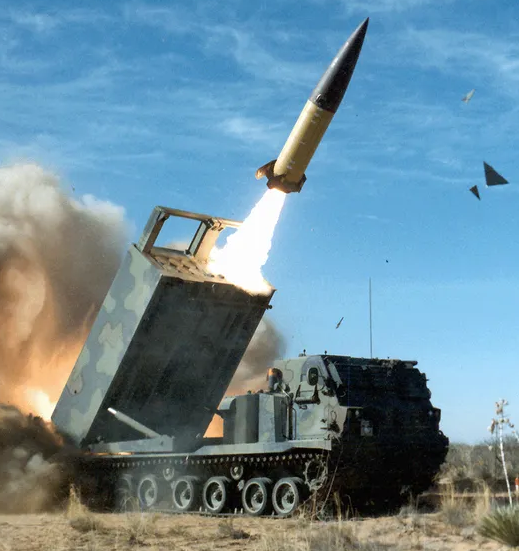The Senate on Tuesday passed a long-delayed $95 billion package with wide bipartisan support after both sides of Capitol Hill have struggled for months to send aid to Ukraine, Israel and Taiwan.
The final vote was 79-18. Fifteen Republicans voted with three Democrats against the bill. Forty-eight Democrats and 31 Republicans voted for the bill.
The legislation next goes to President Joe Biden to sign it into law, who said he would sign the package Wednesday. Its passage is a significant victory for the US president, congressional Democrats and Senate GOP leader Mitch McConnell, who long pushed to send aid to Ukraine even as the right wing of his party increasingly soured on support for Kyiv.
Emphasis mine:
The Senate on Tuesday passed a long-delayed $95 billion package with wide bipartisan support after both sides of Capitol Hill have struggled for months to send aid to Ukraine, Israel and Taiwan.
Point of Order: in fact, only one of our two political parties has struggled to get this passed, and in only one of our legislative chambers. It was the House Republicans.
“Both sides struggle when one side is a petulant child” doesn’t have the same ring to it.
And for all the GeNoCiDe JoE jokers out there, Democrats had stipulations on the funding for Israel that Republicans forced them to remove or they wouldn’t agree to any of it.
The concessions that were made were funding for Ukraine if we dropped the stipulations on how the Israel aid was used… So they are trying, but yet again the party of “fuck you” stands in the way…
Removed by mod
Removed by mod
Removed by mod
If anyone’s wondering, 26 billion goes to Israel
That’s a lot of dead kids
Can’t make a genocide without a few dead kids and a pile of free American cash, as Israel always says!
It’s an unusual expression, but it goes back generations now… O.o
Wow, genocide is expensive huh? Good thing they didn’t forget to donate more money towards it, poor Israel was at risk of leaving the Palestinians in peace.
Genocide Joe went from trying to give israel 16 Billion to just putting another 10 billion on top. Gotta make sure all of Bidens secret weapon
donations“purchases” to israel from before are fully refunded!
The.US staged military equipment in Poland and Germany a week ago. All they have to do is roll trucks. So don’t be surprised if weapons packages are announced and delivered today or tomorrow. The logistics of the US DOD is outstanding.
IRC the US military is why the world has standardised 20ft/40ft shipping container sizes.
Like, WW2 convoys? Hmm. I don’t think that 20/40ft containers were used in WW2. I remember footage of people loading ships using pre-containerized stuff.
googles
Ah, after that, Korean War. It also sounds like the US military’s use did a lot to promote the use of a standard container size, but theirs was significantly smaller, and it wasn’t the first attempt.
https://en.wikipedia.org/wiki/Intermodal_container
The use of standardized steel shipping containers began during the late 1940s and early 1950s, when commercial shipping operators and the US military started developing such units.[18] In 1948 the U.S. Army Transportation Corps developed the “Transporter”, a rigid, corrugated steel container, able to carry 9,000 pounds (4,100 kg). It was 8 ft 6 in (2.59 m) long, 6 ft 3 in (1.91 m) wide, and 6 ft 10 in (2.08 m) high, with double doors on one end, was mounted on skids, and had lifting rings on the top four corners.[19] After proving successful in Korea, the Transporter was developed into the Container Express (CONEX) box system in late 1952. Based on the Transporter, the size and capacity of the Conex were about the same,[nb 2] but the system was made modular, by the addition of a smaller, half-size unit of 6 ft 3 in (1.91 m) long, 4 ft 3 in (1.30 m) wide and 6 ft 10+1⁄2 in (2.10 m) high.[22][23][nb 3] CONEXes could be stacked three high, and protected their contents from the elements.[20] By 1965 the US military used some 100,000 Conex boxes, and more than 200,000 in 1967,[22][26] making this the first worldwide application of intermodal containers.[20] Their invention made a major contribution to the globalization of commerce in the second half of the 20th century, dramatically reducing the cost of transporting goods and hence of long-distance trade.[27][28]
https://en.wikipedia.org/wiki/Conex_box
The CONEX box (a portmanteau of “Container, express”) is a type of cargo container that was developed during the Korean War and was used to transport and store supplies during the Korean and Vietnam wars. It was reinvented by Malcom McLean to form the standard intermodal shipping container (often called an ISO box, after ISO 668/ISO 6346) that is used widely by container shipping companies today.
The use of standardized steel and aluminum shipping containers began during the late 1940s and early 1950s, when commercial shipping operators and the US military started developing such units.[2] During World War II, the US Army began experiments with containers to ship supplies to the front lines. Cargo was being delayed at ports due to the time required by break bulk loading and offloading of ships. In addition the supplies suffered from pilferage and in-transit damage.[1] In 1948 the U.S. Army Transportation Corps developed the “Transporter”, a rigid, corrugated steel container, able to carry 9,000 pounds (4,082 kg). It was 8 ft 6 in (2.59 m) long, 6 ft 3 in (1.91 m) wide, and 6 ft 10 in (2.08 m) high, with double doors on one end, was mounted on skids, and had lifting rings on the top four corners.[3]
After proving successful in Korea, the Transporter was developed into the Container Express (CONEX) box system in late 1952. Based on the Transporter, the size and capacity of the Conex were about the same,[nb 1] but the system was made modular, by the addition of a smaller, half-size unit of 6 ft 3 in (1.91 m) long, 4 ft 3 in (1.30 m) wide and 6 ft 10+1⁄2 in (2.10 m) high.[6][7][nb 2] CONEXes could be stacked three high, and protected their contents from the elements.[4] By 1965, the US military had some 100,000 CONEX boxes, and by 1967, over 100,000 more had been procured to support the escalation of the Vietnam War,[7][10] making this the world’s first intercontinental application of intermodal containers.[4] More than three quarters were shipped only once, because they remained in theatre. The CONEX boxes were as useful to the soldiers as their contents, in particular as storage facilities where there were no other options.[10]
The term “CONEX” remains in common use in the US military to refer to the similar but larger ISO-standard shipping containers.
Then Malcom McLean tried – successfully – to introduce containerization at a large scale in the civilian sector:
https://en.wikipedia.org/wiki/Malcom_McLean
Malcolm Purcell McLean (November 14, 1913 – May 25, 2001)[1] was an American businessman who invented the modern intermodal shipping container, which revolutionized transport and international trade in the second half of the twentieth century. Containerization led to a significant reduction in the cost of freight transportation by eliminating the need for repeated handling of individual pieces of cargo, and also improved reliability, reduced cargo theft, and cut inventory costs by shortening transit time. Containerization is a major driver of globalization.
But while there’s a direct line of descent from McLean’s containers to ISO containers, it still wasn’t exactly his size that became the standard:
https://www.inventionandtech.com/content/evolution-box-0
Containerized shipping vastly increased productivity, but it required standardization before it could be widely used. With that goal in mind, McLean made Sea-Land’s patents available royalty-free to the International Standards Organization (ISO). The ISO set the outside dimensions of containers at 10, 20, and 40 feet long, 8 feet wide, and 8 feet high, later adding 8½- and 9-foot heights. Ironically, it did not include McLean’s 35-foot containers, which meant that Sea-Land had to convert a number of its cellular ships.
Why israel??
Honestly, a standalone Ukrainian bill wouldn’t have passed the senate, like wise an Israeli bill wouldn’t either. Neither by themselves would make it past the 60 vote fillabuster margin, so a compromise was made to throw them all together to get past the fillabuster. This all could have happened way sooner but Trump and the hardliners didn’t want the border issue solved.
I would suspect an Israeli bill would have passed either way. Both parties support Israel. The only way to get Ukraine passed was by tying it to Israel. The border bill didn’t solve any issues. IT was garbage. It is why people have been pushing back on the bill.
Removed by mod
Someone told me that all of these were voted on separately though, was that a lie?
deleted by creator
So according to this logic, two negatives makes a positive? Israel wouldn’t deserve funding on its own, nor Ukraine, but together they should? How does that work, exactly? I’m lost.
(Also f**k Israel. ✊)
There are some legislators who agree with a Ukraine bill and some who agree with an Israel bill. However, some would like to pass only one or the other. So what one does is to create a combined bill and find some number of legislators who will support both. The actual bill, as I recall, isn’t just Ukraine aid and Israel aid, but also Taiwan aid and the TikTok divestment requirement and involved discussions spanning all of the House, Senate, and Biden personally, so there was probably a lot discussion.
It’s not an uncommon practice; part of getting legislation through is figuring out what needs to go in to get enough legislators onboard. “I’ll support X if you support Y.”
Rs wanted Israel funding, Ds wanted Ukraine funding. With the power of working together, both sides got what they wanted.
As if the 75%+ Neoliberal and further right wing Dems who still go to AIPAC events, including Schumer, didn’t want funding for the genocide too 🙄
Of course, that makes sense. I was unnecessarily lost, lol.
They need it for the same reason musk needs that 56 billion from Tesla
For funsies?
Rich people just need more money, duh
Who else is gonna make all these bootstraps???
maybe try pushing up sunflowers Russian army.
Get F’d w/♥️
USA
It’s weird how my local conservatives are complaining about Ukraine benefiting from this but not complaining about Israel…
This is the best summary I could come up with:
The Senate on Tuesday passed a long-delayed $95 billion package with wide bipartisan support after both sides of Capitol Hill have struggled for months to send aid to Ukraine, Israel and Taiwan.
Its passage is a significant victory for the US president, congressional Democrats and Senate GOP leader Mitch McConnell, who long pushed to send aid to Ukraine even as the right wing of his party increasingly soured on support for Kyiv.
“I will sign this bill into law and address the American people as soon as it reaches my desk tomorrow so we can begin sending weapons and equipment to Ukraine this week,” Biden said.
“This critical legislation will make our nation and world more secure as we support our friends who are defending themselves against terrorists like Hamas and tyrants like Putin,” Biden said.
The House took up the legislation after Johnson bucked conservatives in his party who opposed sending aid to Ukraine and threatened to oust him over his handling of the issue.
The legislation underscores the US’ support for Ukraine, Zelensky said, adding that the aid will bolster the country’s defense and military capabilities on the battlefield.
The original article contains 672 words, the summary contains 187 words. Saved 72%. I’m a bot and I’m open source!
The legislation next goes to President Joe Biden to sign it into law, who said he would sign the package Wednesday. Its passage is a significant victory for the US president, congressional Democrats and Senate GOP leader Mitch McConnell, who long pushed to send aid to Ukraine even as the right wing of his party increasingly soured on support for Kyiv.
“This vote reinforces America’s role as a beacon of democracy and the leader of the free world,” he said.
definitely not a victory for the US citizens though whose rights and civil liberties are endangered
Can you explain how our rights and civil liberties are being endangered by this bill passing?
And whose pocketbooks are a lot lighter now.











